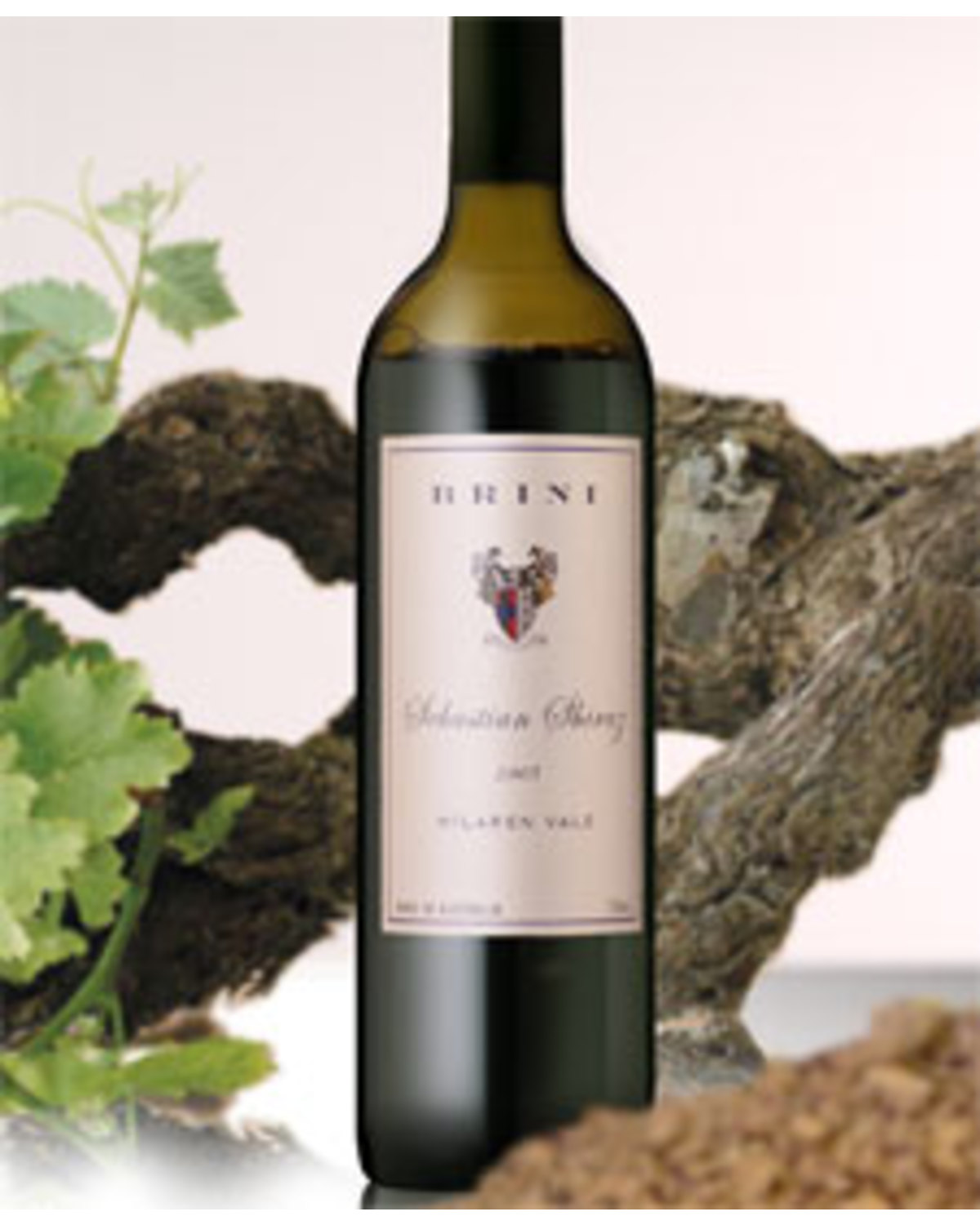
- 97
2006 Brini Sebastian Shiraz
Famous for its ripe, full bodied reds, McLaren Vale has become one of South Australia's most successful wine regions with an ideal climate for viticulture. The moderating effects of the Gulf of St.Vincent prevent frost by warming night time temperatures during Winter and early Spring, while in the Summer, sea breezes have a cooling influence. McLaren Vale is generally described as 'Mediterranean', however, there's a degree of regional diversity to the area that winelovers may not be aware of. Six 'appellations' have been classified, each with a slightly different terroir that influences the style of wines produced.
Readers will be familiar with a large proportion of the vineyards situated on the valley floor on the Willunga basin at around 30-100m above sea level. This is McLaren Vale 'central' and home to famous names like Hardy's, Wirra Wirra and Penny's Hill. Lesser known vineyards exist at much higher elevations (200-300m), yet it's here in sub-districts like Blewitt Springs, that some of McLaren Vale's most prestigious sites can be found. One of these is the Brini vineyard, located within several hundred metres of the much revered Clarendon Hills' Romas and Astralis vineyards (their wines selling for around $100+ and $450+ respectively). The higher one goes, the colder the air gets, prolonging a vineyard's ripening period and resulting in wines that attain that elusive combination of power and elegance (harvest usually takes place one week to ten days later than the lower regions of McLaren Vale). The site selected by the original Brini's in 1953 was more a matter of good fortune rather than science. It was also practical. Higher rainfall in the hills combined with water retaining soils were obvious attractions and meant that the vineyard could be dry grown (i.e. non-irrigated).
However, times have changed. These days, the majority of McLaren Vale vignerons are quite content to remain on the lowlands, begging the question: 'If McLaren Vale's hills are capable of producing such world class wines, why the scarcity of vineyards?' There are several reasons. In Blewitt Springs, the landscape is picturesque, undulating and in places, tough vineyard country - certainly not ideal for the movement of machinery or for accountants wanting to run a vineyard at maximum efficiency. In contrast to the relatively fertile soils of the valley, up in the hills, the soil tends to be leaner, with sandy loam, over clay and ironstone gravels, interspersed by vast gravel and ironstone outcrops.
This is not necessarily a bad thing - the vines struggle to obtain nutrients is reflected in the impeccable fruit quality and flavour, but also results in miniscule yields. Historically, rainfall has steadily increased towards the foothills, but viticulturalist John Brini believes this is a pattern that's becoming less and less reliable. What's more, there's no bore water in the hills and over the last few drought vintages, despite having dams on site, the Brini's have been trucking water in. The big trade off in the hills is of course in flavour concentration and finesse (as anyone who's tried the wines of Clarendon Hills will know). Ten or fifteen years ago John Brini concedes he would be charging a much higher price for his wines. But, 'In the present market, there's not much point.' He comments, 'Right now people are looking for great value and that's it. If I want to move the wines, you have to be realistic and give the market what it wants.'
An outstanding vintage, old vines, a unique terrroir and the viticultural expertise of the Brini Brothers has resulted in two spectacular McLaren Vale Shiraz', displaying that elusive combination of power and elegance.
Prior to our tasting Brini's inaugural Sebastian Shiraz in 2000, the fruit from the Brini vineyard was being sold off to some of the districts' top producers such as Penfolds & d'Arenberg. Over the years, the vineyard's own label has established a reputation for consistency and concentration of flavour, with the 2006 release ranked amongst the very best. Produced from vines planted in 1947, this wine has been matured in a 50/50 blend of American and French oak using equal proportions of new, 1-2 year old and older barrels.
Very deep almost opaque black crimson colour with black crimson hue. Perfumed nose of vanilla, plum, liquorice all sorts and spice. The palate is most impressive, with layers of plum, spice, vanilla, liquorice all sorts, spice and black pepper. Fine grained, perfectly balanced tannins. Very spicy back palate, followed by a long aftertaste of vanilla, spice, plum and liquorice. Superb, distinctive and exceptional value!
Cellar 3-4 years (2012-2013)
Alc/Vol: 14.5%
to most of Australia
